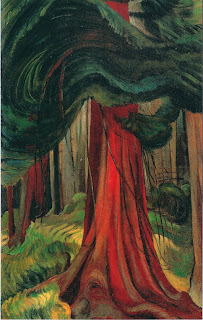Describing process using elements/principles of design
The process first starting by carving the edges of the board. There was one long, thick, and rough line on the side of the board, and the objective was to create different angles from that one line. We used the carving tool to do that. When using the carving tool, we had to go in one direction until different angles were carved out, this was done on both sides. The end result of carving was one relatively smooth line with 4 angles on it. After that we used the sanding paper to sand one face of the board. Since the wood on my board travelled from top to bottom, I sanded up and down.
There were different grades of sanding paper starting at 60 and ending at 400, This process took a long time and the end result was one smooth, glassy, and thick board.
Describing to someone
Important things to know when carving are:
- carve in one direction, going back and forth can create ridges in the board and wood can get caught
- put force on the carving tool when carving
- the main objective of carving is to get different angles on the board
- your hand should be able to travel from one face to the other without going over any corners
Important things to know when sanding are:
- sand in the direction the wood travels on your board
- sand the sides at the same time you sand the faces
- it might be tempting to get to the higher numbers of sanding paper as quickly as possible but the important thing to know is if your base is not solid your product won't be
- spend the most time at 60-80-100
- once your base is solid work up
- your objective is to create a face on the board that feels like glass, and reflect light
- on my board when I look at it I can see my reflection
Difficulties:
My first difficulty that arose were in the carving part of the process. I had not carved the edges enough and did not carve it to the exact number of angles. Therefore, I had to spend additional time on the caving process.
In the carving process, I accidentally chipped a piece of my board off. Ms. Cockburn told me to tape it to the back of my board. Fortunately, we did not have to glue it back on because when I finished the sanding, it had blended in.
When I first started sanding I was in a bit of a rush to get to the higher numbers and therefore had to spend 3 classes on 60-80
Once I completed sanding, I realized i had not sanded the sides in the process and therefore had to start at 60 for the sides.
One unsolved problem was why at the beginning of class the tips of the sanded edge of the board were rough, I suspected it to be rough because of the class stacking the boards on top of each other. Fortunately, Ms.Cockburn arranged some space in the racks beside the door and we were able to keep them there. After that I did not have that problem.
Techniques:
One technique that worked for me in sanding the sides was going in one direction, as said before if you travel in both direction at the same time you could chip your board which did happen to me.
Another technique was, spend time on one angle and then tilt the carving tool slightly to carve the second angle, as opposed to just carving up and down.
Also, an important technique for me was to switch arms when going in the opposite direction, so my arms could rest between turns.
In sanding, I counted how many times I would move my arm from the top to the bottom of the area. When sanding 60-80-100 I moved my arm more than 100 times for each grade, in 100 and above I moved my arm 50 times. I split the area of sanding into 9 areas as shown below
(left-top) (middle-top ) (right-top)
(left-centre) (middle-centre) (right-centre)
(left-bottom) (middle-bottom) (right-bottom)
Overall, I am very pleased with my board, it took a long time to carve and sand but it was worth it. My board has a very smooth feel to it and I have been to stores where I have felt wood that isn't nearly as smooth. I know from this project that whenever I see handmade wood I will have a different view on it.











































.jpg)
.jpg)
.jpg)

